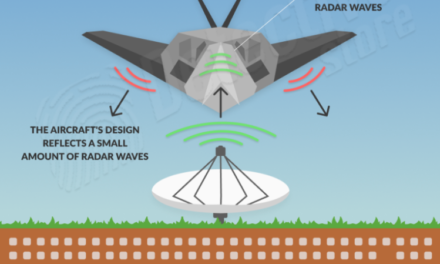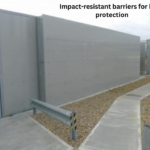Testing standards and certifications for defense-grade safety barriers are critical to ensuring that these barriers meet the high-performance requirements necessary for protecting personnel, vehicles, and assets in military and defense environments. These standards typically focus on durability, ballistic resistance, blast resistance, and overall effectiveness under extreme conditions. Below are the key testing standards and certifications commonly required for defense-grade safety barriers:
1. Ballistic Resistance Standards
Ballistic resistance tests measure the ability of a barrier to withstand projectiles such as bullets or shrapnel. Several standards are used globally to certify the ballistic protection capabilities of defense-grade barriers:
- NIJ (National Institute of Justice) Standards: The NIJ Standard 0108.01 specifies ballistic-resistant protective materials used for law enforcement and military barriers. This standard includes tests for the penetration and backface deformation of barriers when impacted by projectiles, including small arms fire and high-velocity rounds.
- NIJ 0108.01 covers different threat levels ranging from handguns to rifles, determining the ability of barriers to stop various calibers of ammunition (e.g., 9mm, .44 Magnum, 7.62mm NATO).
- STANAG (NATO Standardization Agreement): STANAG 4569 sets the standard for vehicle ballistic protection. It outlines the protection levels for vehicle-mounted barriers and armoring systems, detailing the impact resistance against various types of ammunition and explosive devices. It includes classifications based on the type of weapon and the level of threat.
- STANAG 2920 covers ballistic protection of vehicle-mounted armor, including the ability to resist high-caliber rounds.
- EN (European Standards):
- EN 1063 specifies the classification of bullet-resistant glazing materials used in barriers, including those used in military applications. It details the resistance of materials to different ballistic threats.
- EN 1522 focuses on the resistance of windows and barriers to small arms fire, including standards for testing against projectiles from handguns and rifles.
2. Blast Resistance Standards
Blast resistance tests assess a barrier’s ability to protect against explosive forces, such as those from IEDs, landmines, and other explosives. These tests evaluate the barrier’s ability to withstand shockwaves, debris, and fragmentation.
- NIJ Standard 0101.06 (Ballistic Resistance of Body Armor) includes testing for armor systems that may also apply to barriers to ensure protection against blast fragments.
- U.S. Army Corps of Engineers: The EP 1110-1-18 standard from the U.S. Army Corps of Engineers provides specifications for blast-resistant design for military and defense facilities, including barriers. It outlines testing procedures for both static and dynamic loads caused by blast forces.
- ASTM (American Society for Testing and Materials):
- ASTM F2634 sets guidelines for testing the blast resistance of protective barriers. This standard covers the assessment of the structural integrity of barriers subjected to explosive threats, including the amount of deflection allowed in blast-resistant walls or barriers.
- BS 6180:2011: This British standard includes tests for the structural integrity of barriers against dynamic loads, which can include blast forces or other high-impact events.
3. Environmental Testing Standards
Environmental resistance testing ensures that barriers can withstand extreme environmental conditions such as temperature fluctuations, humidity, corrosion, and exposure to chemicals or UV radiation, which is essential for their longevity in military settings.
- MIL-STD-810: This U.S. military standard defines environmental testing for military equipment, including exposure to high and low temperatures, humidity, vibration, and shock. Barriers are tested for their durability and ability to perform under harsh environmental conditions.
- ISO 9001 Certification: While not specific to ballistic or blast testing, ISO 9001 is a quality management certification that indicates adherence to international manufacturing standards, ensuring consistent quality control and product reliability in barrier production.
4. Structural Integrity and Durability Testing
Defense-grade barriers must maintain their structural integrity when subjected to repeated impacts or heavy loads. Testing for durability and load-bearing capacity is crucial for ensuring the effectiveness of barriers under real-world conditions.
- ASTM E72: This standard provides methods for testing the strength of materials used in constructing safety barriers, such as wind-load resistance, impact resistance, and structural load testing.
- ASTM A240: This standard addresses materials used in ballistic-resistant barriers, ensuring that they are made from high-strength materials such as steel alloys or composites that meet durability requirements.
5. Fire Resistance Standards
In addition to ballistic and blast resistance, fire resistance is another critical factor for defense-grade barriers. Barriers are often exposed to high heat and fires, especially in conflict zones.
- UL 752: This standard specifies the fire resistance and protective characteristics of barriers used for ballistic and fire protection in buildings. It outlines the requirements for materials and construction methods that ensure the barrier can withstand fire exposure while providing safety.
- BS EN 13501: This European standard classifies the fire performance of building materials, including barriers and partitioning materials used in military and defense environments.
6. International Certifications and Approvals
In addition to national standards, defense-grade barriers may also require certifications from international organizations that ensure their performance across different countries and military organizations.
- ISO 14001: Certification for environmental management systems, ensuring that manufacturers meet environmental and sustainability requirements in their production processes.
- CE Marking: In the European Union, CE marking indicates that a barrier has met European Union safety, health, and environmental protection standards.
7. Additional Testing Methods
- Kinetic Testing: Some barriers are subjected to kinetic impact tests to simulate the effects of high-speed projectiles or debris, ensuring their resistance against missile threats or shrapnel from explosive devices.
- Non-Destructive Testing (NDT): Techniques like ultrasonic testing, X-ray imaging, and magnetic particle testing are used to inspect the internal integrity of barriers for hidden cracks, voids, or defects that might compromise their protective capability.
Defense-grade safety barriers must meet rigorous testing standards and certifications to ensure they provide reliable protection in various combat and high-risk environments. These standards cover ballistic resistance, blast protection, durability, environmental performance, and fire resistance.













